#Discoveries in Pompeii Reveal Lives of Lower and Middle Classes
Text
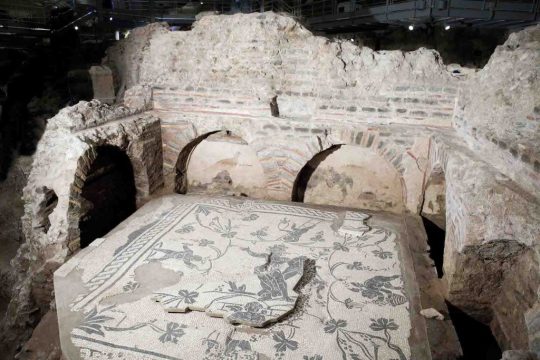
Vatican Museums Opens Ancient Roman Necropolis to the Public
The site was previously only accessible to scholars and specialists.
The Vatican Museums has newly opened to the public an ancient necropolis stocked with carved marble sarcophagi and bone-filled open graves of everyday ancient Romans.
The word necropolis comes from the Greek expression for “city of the dead.” These “cities” grew up alongside roads outside the urban center due to laws forbidding cremation and burial of the dead inside city limits. Funerary practices and rites are preserved especially clearly in the necropolis that extends along the Via Triumphalis (a Roman road now known as the Via Trionfale), with burial sites accompanied by eye-popping Roman frescoes and mosaics.
Previously, the necropolis was accessible only to certain groups of scholars and specialists. It is now open to the public via the new Saint Rose Gate entrance, inaugurated with the exhibition “Life and Death in the Rome of the Caesars.”
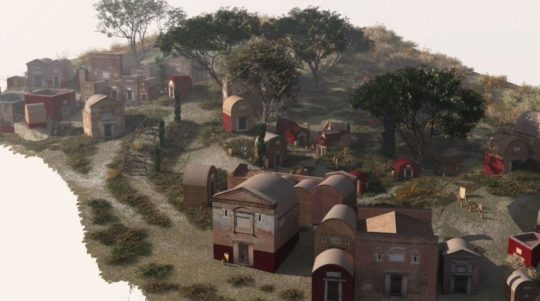
How extensive is the archaeological area?
It extends nearly 11,000 square feet. The size of the necropolis is not as extensive as some other Roman burial sites, but its importance lies in its proximity to one of the most significant religious sites in Christianity.
What is known about particular people who are buried there?
According to archaeologists, no less than the tomb of St. Peter himself is located in the Vatican Necropolis.
But in general, “Here, we have represented the lower middle class of Rome’s population,” said Leonardo Di Blasi, an archaeologist with the Vatican Museums, in a video on Euro News. “They are essentially slaves, freedmen, artisans of the city of Rome.” Some were the property of the emperor, and are indicated to have been the “servant of Nero.”
One of them was a man named Alcimus, who was the set director for the downtown Theater of Pompeii, the most important theater of the period. Another was a horse trainer who worked at the chariot races.
One young boy is interred there, according to the Catholic News Service, marked by a sculpture of a boy’s head accompanied by an inscription reading “Vixit Anni IIII Menses IIII Dies X,” Latin for “He lived four years, four months, and 10 days.”
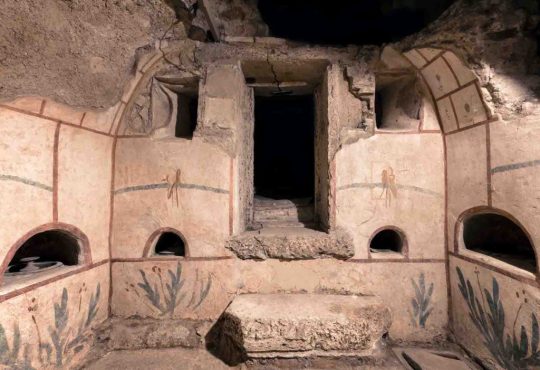
How did this ancient burial ground come to light?
The Vatican burial grounds were first explored in the 1940s at the request of then Pope Pius X, who wanted to be buried near the grave of Peter the Apostle. The dig revealed numerous mausoleums and tombs.
The newest part of the burial ground was revealed through an infrastructure project in 2003, as the Vatican excavated for a new multilevel employee parking garage.
What happened when the Vatican discovered these newest burial grounds?
The department of the Vatican that was overseeing construction of the parking garage, intent on meeting its deadline, was accused of trying to conceal the find, Giandomenico Spinola, an archaeologist and deputy artistic-scientific director of the museums, told the Catholic News Service. It was only when journalists publicized the discovery that he and his colleagues were invited in to advise.
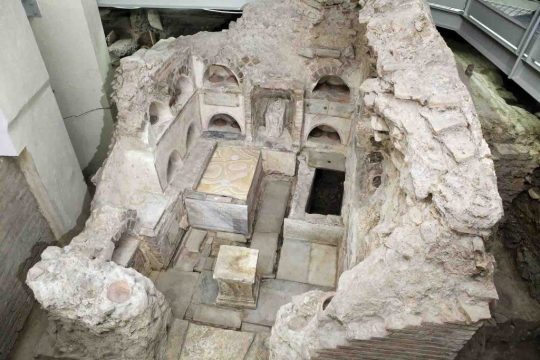

When were the bodies there buried? How have the tombs been so well preserved?
Bodies were interred in this burial ground between the first century B.C.E and the fourth century C.E., and organic remains have vanished. A number of the graves, including their tombs and decorations, including frescoes, mosaic floors, and marble-carved inscriptions, were fortuitously preserved by a series of mudslides in the area.
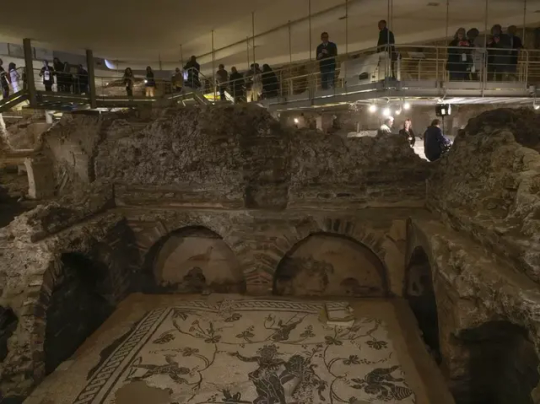
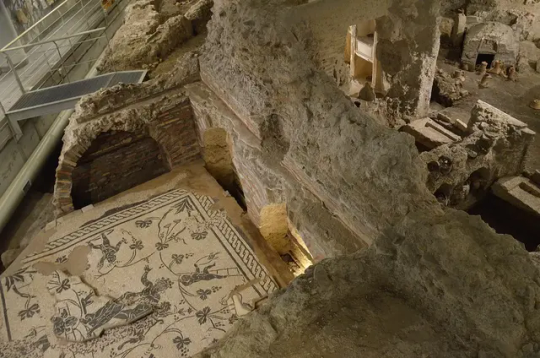
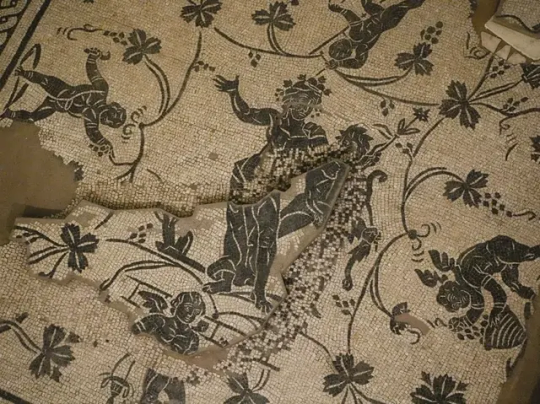
#Vatican Museums Opens Ancient Roman Necropolis to the Public#The Vatican Museums#Ancient Roman 'City for the Dead'#Via Triumphalis necropolis#Life and Death in the Rome of the Caesars#ancient graves#ancient tombs#ancient necropolis#ancient artifacts#archeology#archeolgst#history#history news#ancient history#ancient culture#ancient civilizations#ancient rome#roman history#roman empire#roman art
268 notes
·
View notes
Photo
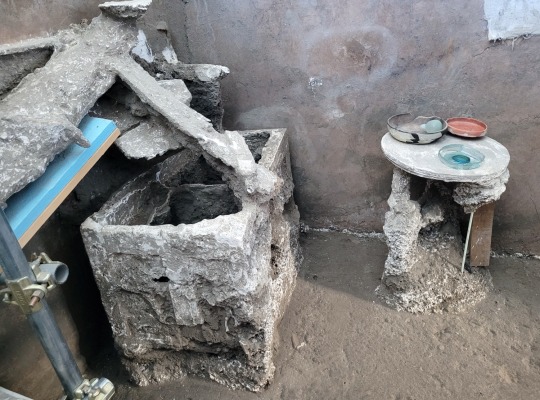
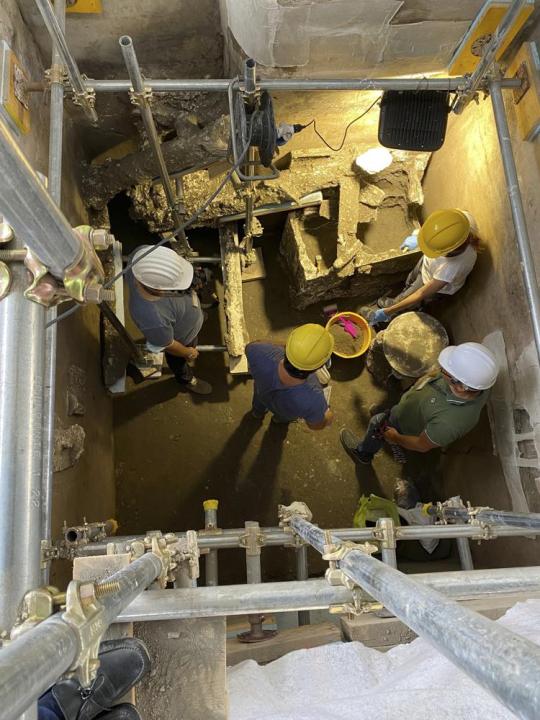

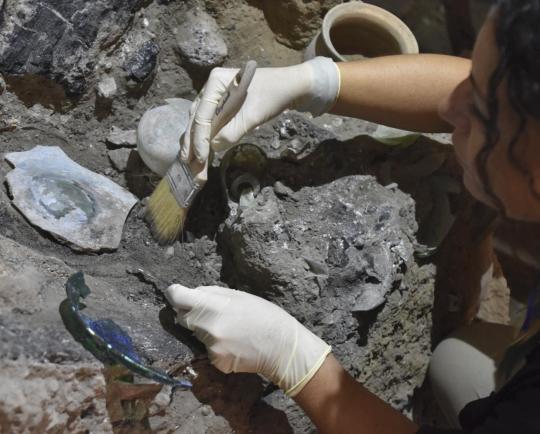
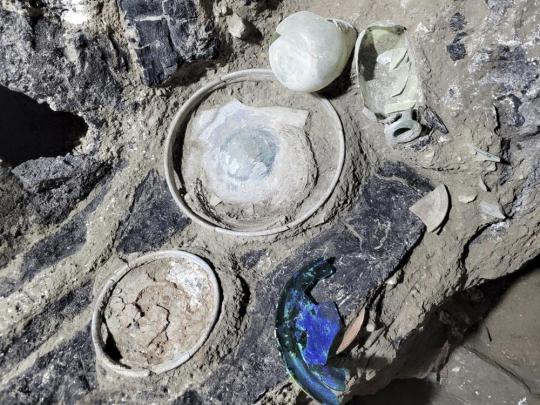
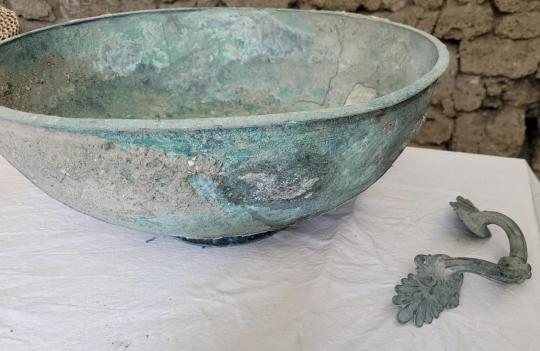

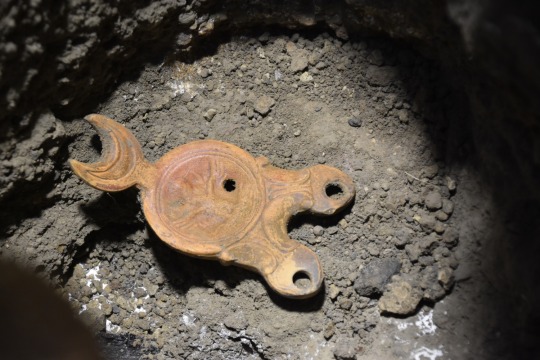

Discoveries in Pompeii Reveal Lives of Lower and Middle Classes
The latest discoveries in the excavation of Pompeii’s Regio V neighborhood are fully furnished utility spaces, of great archaeological significance for the details they preserve of a common domestic context in the 1st century Roman town.
The room was found in the House of the Enchanted Garden, a beautifully frescoed home with a lararium (a shrine to the household gods) that is one of the largest ever discovered in Pompeii. In 2021, archaeologists undertook an excavation and restoration of rooms on the ground floor in front of the lararium and the stories above it. They uncovered four rooms, two on the ground floor and two above, that were furnished. One was unfinished, with unplastered walls and an earthen floor, a jarring contrast in a house so decorated with such fine frescoes. The unfinished room was used for storage.
Archaeologists were able to make casts of the furnishings in the room which left a cavity in the hardened ash that could be filled with plaster. One room contained a bed frame and a pillow. The texture of the fabric was imprinted in the ash and is visible on the plaster cast. It is a very simple cot with ropes strung across the sides. There isn’t even a mattress, let along any decoration. Next to the bed was a wooden trunk divided into two compartments. The lid was open, but broken when the beams and floorboards of the story above collapsed in the eruption. Inside the trunk, archaeologists found a terra sigillata saucer and a double-spouted oil lamp depicting Zeus in the act of transforming into an eagle. Next to the trunk was a circular three-legged table with a shallow ceramic bowl containing two small glass bottles, a blue glass saucer and a terra sigillata bowl.
In the storage room, archaeologists were able to make two casts: a shelf and a group of wooden planks in different sizes, cuts and finishes, tied together. This was probably a collection of raw materials for assorted home maintenance projects from furniture patching to roof repair. Outside the room in a small hallway another utilitarian treasure was found: a tall wooden cabinet with at least four doors and five internal shelves. The top of the wardrobe and the front doors were damaged when the floor above the room collapsed. The remains of jugs, amphorae, bowls and plates were found on the damaged top shelf.
The excavation of the upper rooms revealed materials that were in the process of collapsing onto the rooms below. Of enormous archaeological value is a unique group of wax writing tablets. The group consists of seven triptychs tied both vertically and horizontally by a cord. A large cupboard, collapsed in the eruption, was also excavated. It contained different types of common use ceramics for kitchen and dining, as well as fine terra sigillata ceramics and glass. There was also a set of small bronze vessels, including a basin with palm leaf-shaped handles and a small jug decorated with a sphinx and lion’s head. Another special treasure is an incense burner shaped like a cradle with a male figure at one end. The polychrome paint coloring the figure and decorating the cradle with geometric designs is perfectly preserved.
The excavation overlapped onto a residential property behind the House of the Enchanted Garden, and there the plaster cast technique revealed the imprint of cane lathing in the mortar of a collapsed false ceiling. The cast shows the guts of Pompeiian construction: bundles of caning tied together by a thin cord and covered by a gauze-like fabric to separate the lathing from the wet mortar. Casts were also obtained of what appears to be wood paneling on the north, east and south walls of the room. Some are carved with coffered decoration; others are inlaid with delicate bone elements.
#Discoveries in Pompeii Reveal Lives of Lower and Middle Classes#House of the Enchanted Garden#archeology#archeolgst#ancient artifacts#history#history news#ancient history#ancient culture#ancient civilizations#roman empire#roman history
75 notes
·
View notes